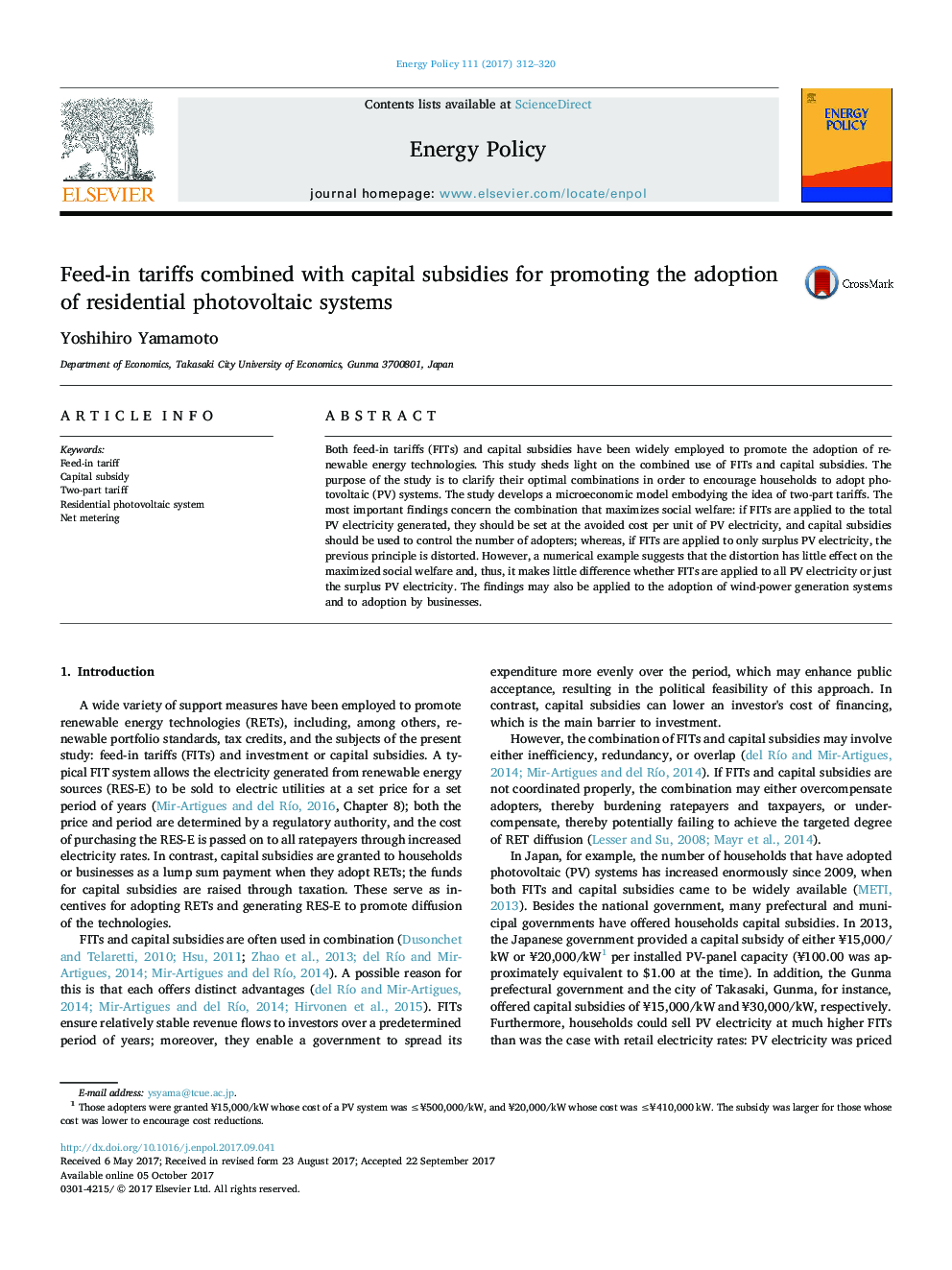| Article ID | Journal | Published Year | Pages | File Type |
|---|---|---|---|---|
| 5105493 | Energy Policy | 2017 | 9 Pages |
â¢Combinations of feed-in tariffs (FITs) and capital subsidies are investigated.â¢The adoption of residential photovoltaic (PV) systems is modeled.â¢PV electricity output, promotion cost, and social welfare are examined.â¢A numerical example is also provided.â¢Optimal FITs and capital subsidies are suggested for several policy goals.
Both feed-in tariffs (FITs) and capital subsidies have been widely employed to promote the adoption of renewable energy technologies. This study sheds light on the combined use of FITs and capital subsidies. The purpose of the study is to clarify their optimal combinations in order to encourage households to adopt photovoltaic (PV) systems. The study develops a microeconomic model embodying the idea of two-part tariffs. The most important findings concern the combination that maximizes social welfare: if FITs are applied to the total PV electricity generated, they should be set at the avoided cost per unit of PV electricity, and capital subsidies should be used to control the number of adopters; whereas, if FITs are applied to only surplus PV electricity, the previous principle is distorted. However, a numerical example suggests that the distortion has little effect on the maximized social welfare and, thus, it makes little difference whether FITs are applied to all PV electricity or just the surplus PV electricity. The findings may also be applied to the adoption of wind-power generation systems and to adoption by businesses.
